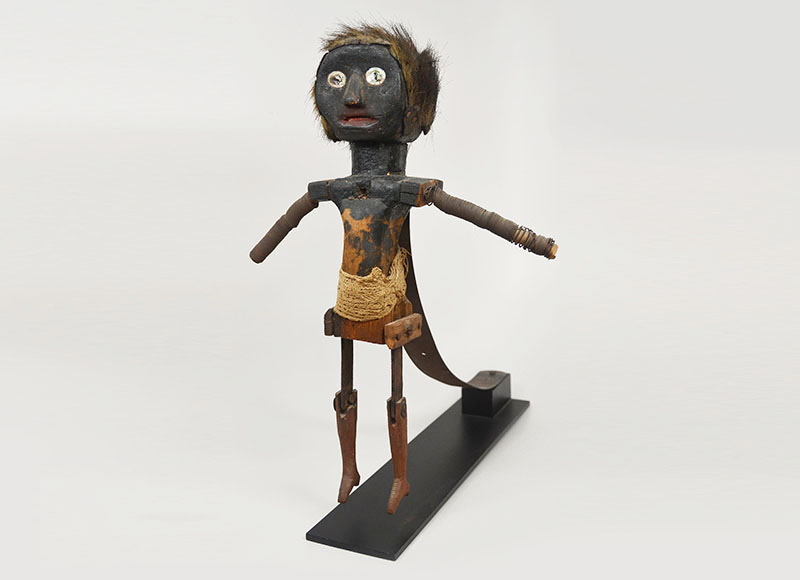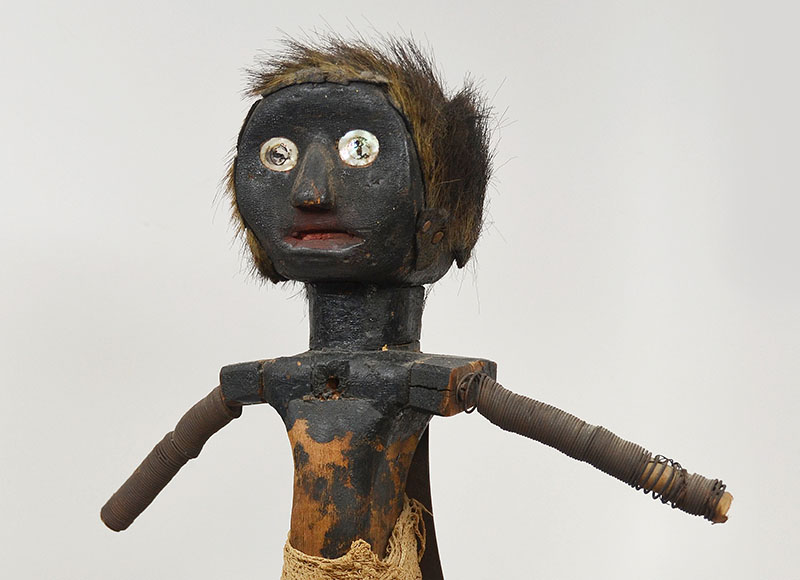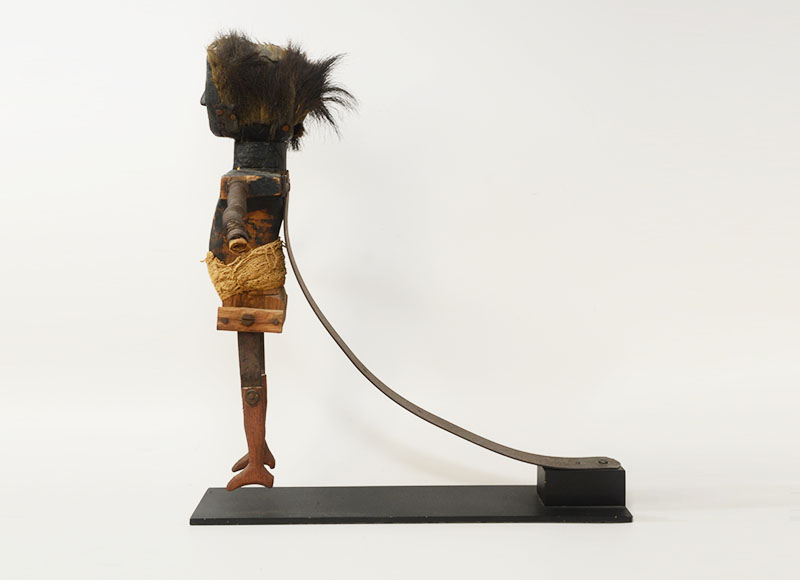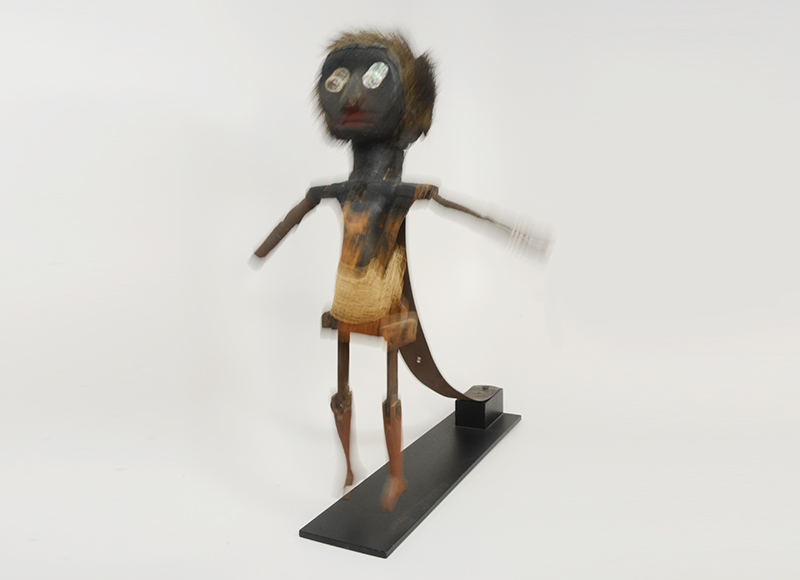- HOME
- INVENTORY
- GALLERY
- BOOKS
- CATALOGS
- ABOUT & MORE
- CONTACT
Contact Us
Important African-American Limberjack
Carved wood, polychrome, mother-of-pearl, animal hair, iron, springs, linen
Circa: 1860
Size: 16" (l) x 17 1/2" (h)
This large scale kinetic sculpture or limberjack escapes the form and is powerfully rendered more as a fetish figure than an object of entertainment. It was likely created by an African-American street musician made for personal performance, not novelty. Its potent visage and presence can be compared to African nkisi or spirit figures with the arrangement of re-purposed and disparate materials from the applied animal hair, macramé, iron springs, mother-of-pearl eyes and the “offering up” posture.
Its spring arms and jangly legs are animated by stepping up and down on the re-purposed iron band—as one would use a kick drum to keep time and rhythm.
Dancing dolls or jig dolls have been used by street musicians and entertainers since at least the 16th century. During the 19th century, in America, the figures became a cottage craft and often depicted African-Americans as minstrel figures (in the exploitive genre). This figure escapes that ugly prejudice and presents a deeply personal and cultural work of art.
The figure originated from, or around, Buffalo, NY. Buffalo is part of the Niagara Frontier and had long been a destination of free blacks. The first African-American settler arrived in 1792. By the mid 1800’s it had the 10th largest population of African-Americans and later became a stop along the Underground Railroad.
Provenance: Marvill Collection of American Folk Art
Illustrated and discussed in American Primitive, chapter plate for “Articulated Figures,” page 132, fig. 180.
Condition: Excellent with wear commensurate with age.
Price: SOLD

ALL ITEMS GUARANTEED AS REPRESENTED
STEVEN S. POWERS • 53 STANTON ST, NY, NY 10002 • 917-518-0809 • email: steve@stevenspowers.com • © all rights reserved




